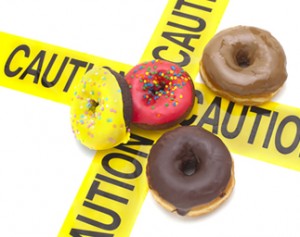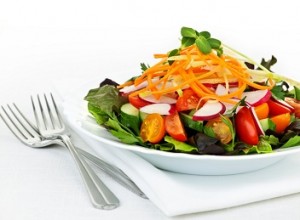By Christie Korth, CHC AADP
 It’s 3pm and you are sitting at your desk at work, trying to silently nudge the time along so you can clock out. You’re tired, and the candy machine in the lounge is calling your name. A war begins in your head- with one side trying to fight the urge to but in the end, the other wins and you convince yourself you need a pick me up. Suddenly- the apple on your desk looks less appealing. Before you know it, you are looking at the empty peanut chocolate bar wrapper on your desk. Almost as fast as you ate the bar, you feel guilty. Why does this happen?
It’s 3pm and you are sitting at your desk at work, trying to silently nudge the time along so you can clock out. You’re tired, and the candy machine in the lounge is calling your name. A war begins in your head- with one side trying to fight the urge to but in the end, the other wins and you convince yourself you need a pick me up. Suddenly- the apple on your desk looks less appealing. Before you know it, you are looking at the empty peanut chocolate bar wrapper on your desk. Almost as fast as you ate the bar, you feel guilty. Why does this happen?
Sugar stimulates the feel-good, stimulating hormone dopamine- which; for some can be chronically low and lead to sugar cravings. Other times, a more simplistic reason is to blame- dehydration. Your body sends signals to the brain for water, and the cravings can be misinterpreted for a sugar craving. Next time you are out to lunch and want dessert, check to see if you have consumed any water. If not, you may be surprised to see your craving disappears after a cool glass of water.
Here are some other reasons for craving sugar:
1: Emotional Eating: Do you ever eat when you are bored, or upset? We eat when we are happy at a celebration and when we are struck by a craving. Consider if what you are really craving is food, or if you are sad for example- if you really just need to talk or a hug. Paying attention to your physical and emotional needs and being in tune with what your body is really asking for is key.
2: Yin/Yang theory: Consider eating one food can cause you to crave another. For example, foods which are considered Yin foods are expansive foods like sugar, alcohol, white foods, milk, and foods like meat, cheese, eggs and salt are considered Yang foods, which are contractive. Eating these foods can cause a craving for another. Ever want something salty after you eat something sweet? Consider eating more neutral foods like fruits, vegetables, grains, poultry, fish, beans, and the like.
 3: Seasonal Eating: Sometimes we crave foods because of the season. Up until the past couple 100 years, we ate seasonally. For example, if you lived in New York, odds are- you didn’t have pineapple in December like we have access to today. Consider we should eat more warming foods in the fall and winter like meats, squashes, and root vegetables, more greens in the spring and cooling, refreshing fruits like watermelon, peaches and plums in the summer. Eating according to Mother Nature’s unique schedule is not only cheaper, but tastier and better for your bodies overall needs.
3: Seasonal Eating: Sometimes we crave foods because of the season. Up until the past couple 100 years, we ate seasonally. For example, if you lived in New York, odds are- you didn’t have pineapple in December like we have access to today. Consider we should eat more warming foods in the fall and winter like meats, squashes, and root vegetables, more greens in the spring and cooling, refreshing fruits like watermelon, peaches and plums in the summer. Eating according to Mother Nature’s unique schedule is not only cheaper, but tastier and better for your bodies overall needs.
Even if you think you don’t consume a lot of sugar, please evaluate your dietary intake carefully. In my book, The IBD Healing Plan and Recipe Book: Using Whole Foods to Relieve Crohn’s Disease and Colitis, I reveal that the average American eats 142 lbs of sugar, per person, per year. That is someone’s entire body weight in sugar, or 70 lb boxes per person! Or put into daily perspective- the average American consumes about 20 teaspoons of sugar per day.
If you’re not sure how this is possible, consider we are accustomed to drinking our calories in coffee, juice, soda and sports beverages. We consume doughnuts for breakfast, rolls with processed meat for lunch, cake for dessert, the list goes on and on. Think about this is impacting our society. The fuel we put into our bodies surely plays a role in the auto immune disease pandemic we are seeing today. We have more and more people succumbing to preventable diseases like diabetes, heart disease and cancer than ever before. Most people today are not fortunate enough to report not knowing someone with any of these diseases. How can we stop the increase in these diseases? The answer is simple: eat less sugar, refined fats and meat and consume more whole, unprocessed foods.
Stay tuned for part 2 of this article…..
– Christie Korth is a Crohn’s disease survivor, author, certified health coach and holistic nutritionist who found her way to health and wellness after nearly succumbing to a severe case of Crohn’s disease. After harnessing the power of nutrition and gaining her health back, she then went on to be the founder and director of Happy & Healthy Wellness Counseling based just outside of NYC. She studied at the Institute for Integrative Nutrition, Columbia University and the Clayton College of Natural Health and is a certified holistic health practitioner with the American Association of Drugless Practitioners. Christie is the Corporate Nutritionist for Brain Balance Achievement Centers, where she designs the nutrition protocol for franchises across the country. Christie is a nutrition expert for Dr. Oz’s Sharecare.com and frequently contributes nutrition articles to Long Island Parent Magazine. Christie is he author of The IBD Healing Plan and Recipe Book: A Guide to Releive Crohn’s and Colitis with Whole Foods. Christie lives in New York with her son, her husband, and her cat.

Smart Article points. Thank you for this. I’ve been guilty of a couple of these as the dehyration and reaching for sweets after drinks or certain foods. I’m interested in muscle building and its effect on ‘cravings’ and would encourage any future research or articlesd in area. Does muscle buiulding help production or stimulates the feel-good, stimulating hormone dopamine? I dont know , but muscle buildig sure increases desire for calories. I just make sure they are good calories…